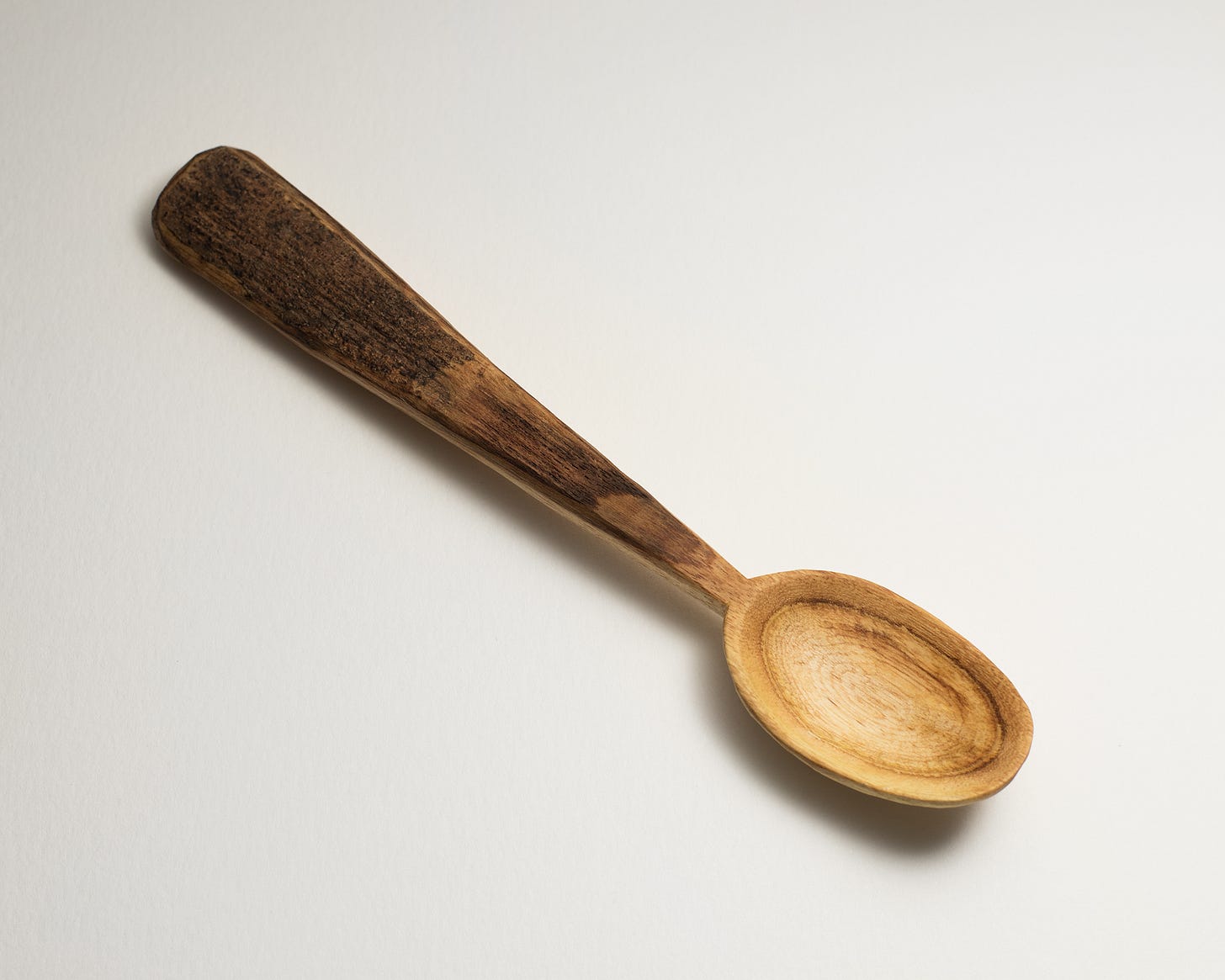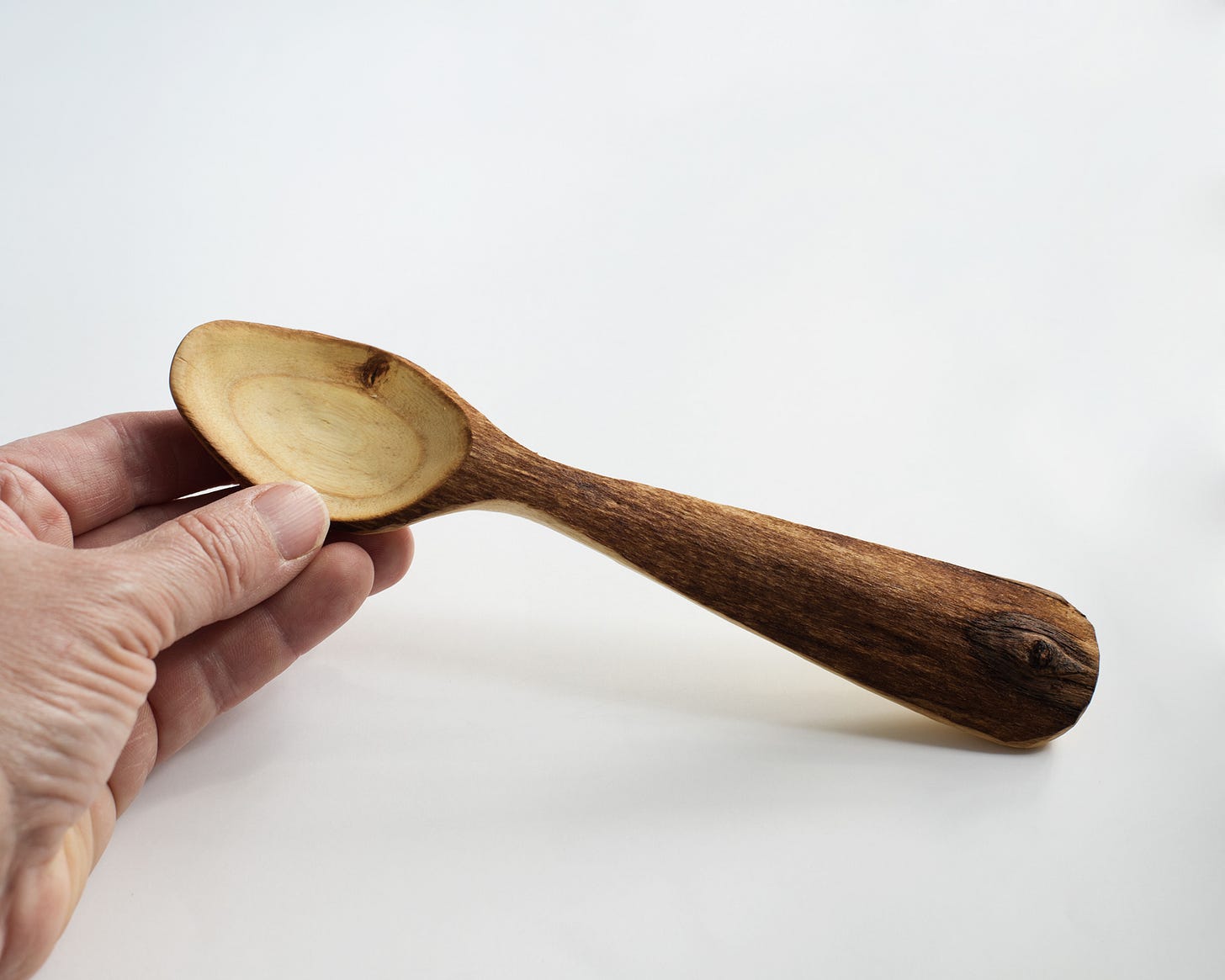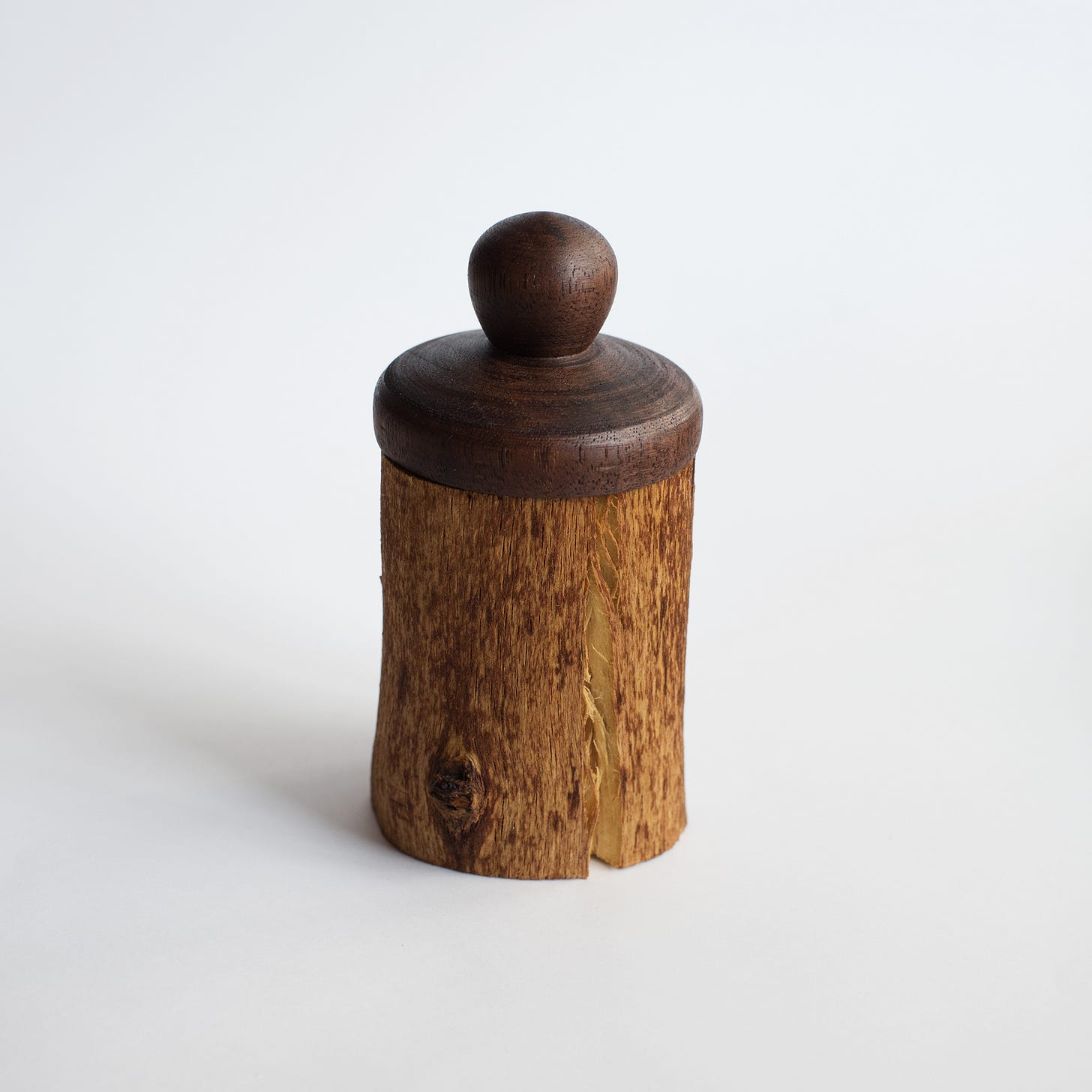Sometimes a special tree doesn’t make it. Although many can easily outlive us, they don’t all live forever. Storms, pests, fungus or overgrowth can necessitate a tree’s removal.
I followed along with a former teacher of mine from my art school days who posted about growing a fig tree in his backyard in Pennsylvania. He had named it Gerald and lovingly cared for it, and celebrated its fruitful years, which were not very many.

Sadly, when Gerald’s winter wrappings were removed, he had a scale infection from which he couldn’t recover and the decision was made to end his life. When I saw the post about Gerald’s demise, I reached out to my teacher, Eric, about making something for him from the thickest part of the trunk. I had never worked with fig wood before and welcomed the opportunity to try something new.
The piece that I received was about a foot long and about 2 1/2 inches wide. My plan was to make at least one spoon, even if it was just a small one. Thinking about the length in relation to the bowl width, I decided to trim off one end to save for later. Next, because it’s problematic to incorporate the pith in any wood project, I split it with the plan to try for two spoons.
The wood was very easy to carve and smelled so sweet that I made all visitors to my home experience it. It was a pleasure to work with.
Wanting to keep a part of Gerald that Eric was familiar with, I decided to leave the bark on the handle, but for aesthetics, I had to decide how much was enough of that tangible experience while balancing the look and form of the handle. I took slow and deliberate cuts, removing chips of bark with lots of pausing to reassess, then stopped before I was certain that I should. I think when I feel certain that I should stop it’s because I went too far.
For the second spoon, I thought I would make a different style of spoon that featured some of the unique aspects of the wood. I started by peeling off the bark to leave that dark layer just covering the sap wood. This piece had a knot at one end that I placed at the end of the handle as a feature. The knot in the spoon bowl was something that revealed itself when I hollowed it out with my hook knife. It dried with a crack in it that won’t lend itself to wet food applications. In the end, both spoons are compromises made with what I had available, plus a misplaced axe strike and a hidden knot in a critical location. Other carvers that I know would throw “failed spoons” in the campfire, but I usually don’t give up on my imperfect pieces.
With just a small piece left, I wanted to try making a kind of shrink pot, where the inside of a log is hollowed out while the wood is still wet. Instead of hand-carving, as these are normally done, I mounted my 3-inch piece on the lathe and drilled a 1-inch hole through the pith, then I set it aside to dry.
Busy with life stuff, I didn’t check on it for a week. Deep cracks had formed on opposite sides but they didn’t go all the way through to the center. I knew I wouldn’t be able to make the hole any wider or it would split in two. After I had cut the top and bottom parallel, I only had 2 1/2 inches in length. My first idea was to make a top and bottom out of walnut with a wider diameter to make the overall piece more substantial. In the end, though, this only looked good when viewing one specific face where the symmetry lined up. Scrapping that idea, I made a new lid to fit tightly to the diameter of the top and simply plugged the bottom hole. The interior space is small, but it still holds some of its sweet fig smell.
Overall, it was an enjoyable challenge to see what I can make out of a piece of a new wood species. I’m happy that I was able to make three pieces from one small Gerald log that went through the mail. I’ll be sending these back to Eric in the next few days for him to enjoy and fondly remember a special tree that grew in his yard.










I love them, they are so special and beautiful! Thank you!!!